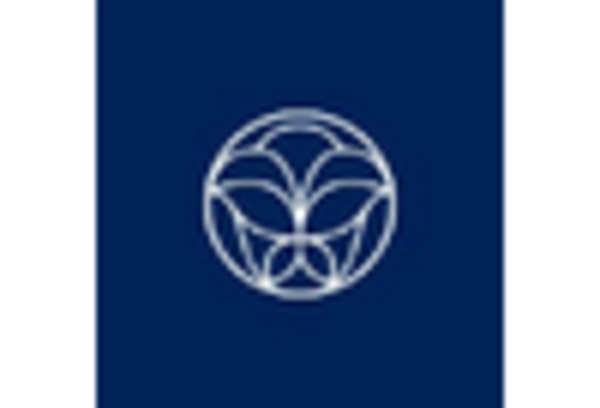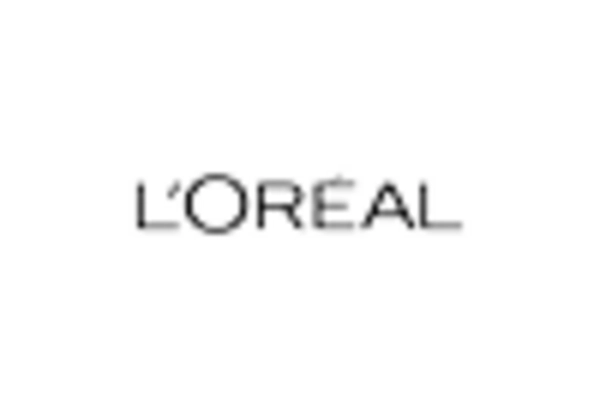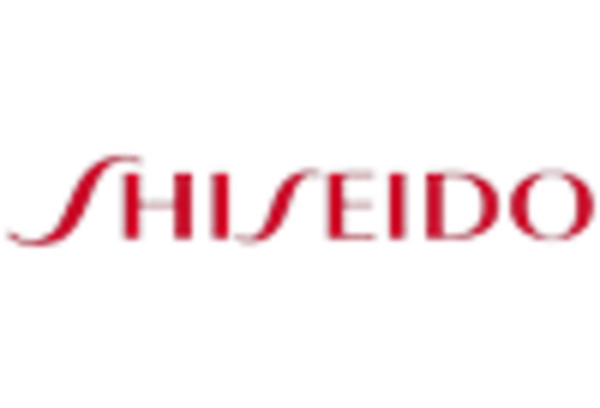Increasing Demand for Personal Care
The beauty tools market in China is experiencing a notable surge in demand for personal care products. This trend is driven by a growing awareness of self-care and grooming among consumers, particularly among the younger demographic. As disposable incomes rise, individuals are increasingly willing to invest in beauty tools that enhance their personal appearance. According to recent data, the market is projected to grow at a CAGR of approximately 8.5% over the next five years. This growth is indicative of a broader cultural shift towards prioritizing personal aesthetics, thereby propelling the beauty tools market forward.
Rising Interest in DIY Beauty Solutions
The beauty tools market in China is witnessing a growing trend towards DIY beauty solutions. Consumers are increasingly seeking tools that enable them to perform salon-quality treatments at home, driven by both convenience and cost-effectiveness. This shift is particularly evident among millennials and Gen Z, who prioritize personalized beauty experiences. The market for DIY beauty tools is projected to expand significantly, with estimates suggesting a growth rate of around 7% annually. This trend reflects a broader movement within the beauty tools market towards self-sufficiency and empowerment in personal grooming.
Technological Advancements in Beauty Tools
Technological innovation plays a pivotal role in shaping the beauty tools market in China. The introduction of smart beauty devices, which integrate advanced features such as skin analysis and personalized settings, is attracting tech-savvy consumers. These innovations not only enhance user experience but also improve the effectiveness of beauty routines. The market for high-tech beauty tools is expected to reach a valuation of $2 billion by 2026, reflecting a growing consumer preference for products that combine functionality with cutting-edge technology. This trend indicates a significant evolution within the beauty tools market.
Expansion of Retail Channels and Accessibility
The beauty tools market in China is benefiting from the expansion of retail channels, which enhances product accessibility for consumers. Traditional brick-and-mortar stores are increasingly complemented by online platforms, allowing for a seamless shopping experience. This dual-channel approach caters to diverse consumer preferences, facilitating greater market penetration. Recent data indicates that online sales of beauty tools have surged by 30% in the past year, underscoring the importance of e-commerce in the beauty tools market. This trend suggests a promising future for brands that effectively utilize both retail formats.
Influence of Social Media and Beauty Influencers
The impact of social media on consumer behavior is profoundly influencing the beauty tools market in China. Platforms like Weibo and Douyin are pivotal in shaping trends and driving sales, as beauty influencers showcase various tools and techniques to their followers. This phenomenon has led to a rapid increase in product visibility and consumer engagement. Recent statistics suggest that approximately 60% of beauty tool purchases are influenced by social media recommendations. Consequently, the beauty tools market is adapting to leverage these platforms for marketing and outreach, thereby enhancing its growth potential.

















Leave a Comment